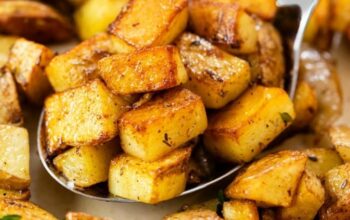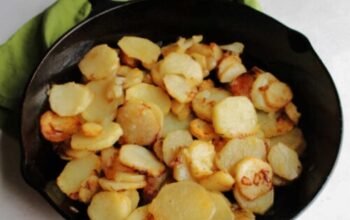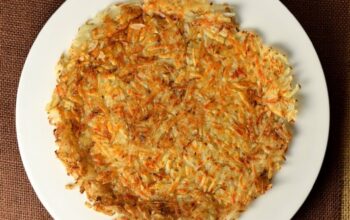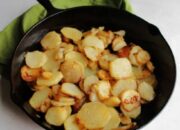Dig into the World of Seed Potatoes!
Are you ready to unlock the secrets of growing your own seed potatoes at Home? Let’s dig into the fascinating world of seed potatoes and discover the wonders that await you in your very own backyard garden.
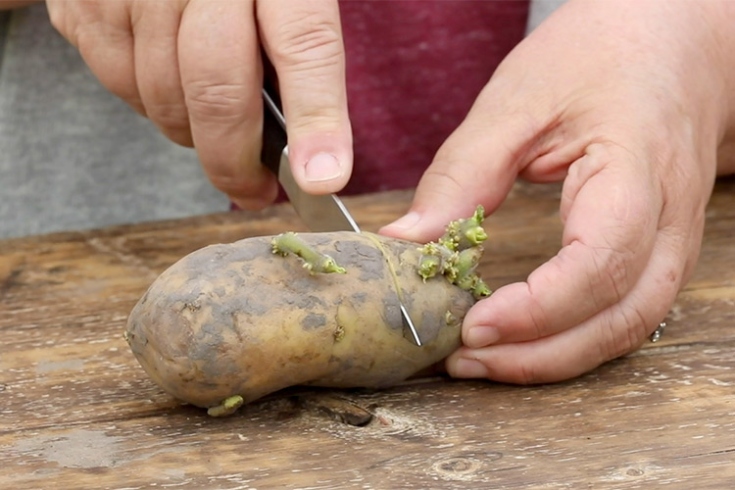
Image Source: ctfassets.net
Seed potatoes are not your typical garden variety potatoes. They are specially grown and selected for planting purposes, ensuring that you get the best possible yield of healthy, delicious potatoes. When it comes to growing your own seed potatoes, there are a few key things to keep in mind to ensure a successful harvest.
First and foremost, selecting the right seed potatoes is crucial. Look for certified disease-free seed potatoes from a reputable source to ensure that you are starting off on the right foot. There are many different varieties of seed potatoes to choose from, each with their own unique flavor and texture profiles. Whether you prefer a classic russet potato or a colorful fingerling variety, there is a seed potato out there for everyone.
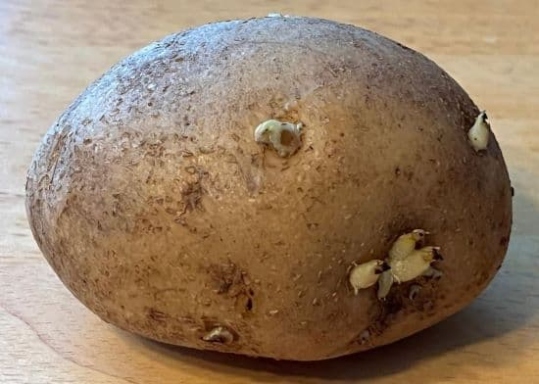
Image Source: gardenersnet.com
Once you have your seed potatoes in hand, it’s time to prepare your planting area. Potatoes thrive in loose, well-draining soil with plenty of organic matter. Prepare your soil by tilling it to a depth of at least 6 inches and adding in compost or aged manure to enrich the soil. Avoid planting potatoes in areas that are prone to waterlogging, as this can lead to rot and disease.
When it comes to planting your seed potatoes, there are a few different methods you can choose from. The traditional method involves planting whole seed potatoes with multiple eyes, while the cut-and-dry method involves cutting larger seed potatoes into smaller pieces with at least one eye each. Whichever method you choose, be sure to plant your seed potatoes about 4 inches deep and 12 inches apart in rows spaced 2 feet apart.
As your seed potatoes begin to sprout and grow, it’s important to keep up with regular maintenance to ensure a successful harvest. Keep your potato plants well-watered, but be careful not to overwater as this can lead to rot. Mulch around your plants to help retain moisture and suppress weeds, and keep an eye out for common potato pests and diseases such as potato beetles and late blight.
One of the most exciting parts of growing your own seed potatoes is watching them flourish and grow into healthy, vibrant plants. As your potato plants begin to flower and set fruit, it’s time to start thinking about when to harvest your spuds. The best time to harvest your seed potatoes is when the plants have died back and the skins of the potatoes are set. Gently dig up your potatoes with a garden fork, being careful not to damage the tubers.
Harvesting your own homegrown seed potatoes is a satisfying and rewarding experience that will leave you with a sense of accomplishment and pride. Whether you choose to boil them, bake them, or fry them up into crispy chips, there’s nothing quite like the taste of fresh, homegrown potatoes straight from your garden. So why not dig into the world of seed potatoes and start growing your own delicious spuds today?
Planting the Seeds of Success
Unlocking the secrets of growing your own seed potatoes at Home starts with the exciting process of planting the seeds of success. This crucial step sets the foundation for a bountiful harvest of delicious and nutritious potatoes that you can enjoy with your family and friends.
When it comes to planting seed potatoes, there are a few key things to keep in mind to ensure a successful growing season. First and foremost, it’s important to select the right variety of seed potatoes for your growing conditions and culinary preferences. Whether you prefer creamy Yukon Golds, versatile Russets, or colorful Purple Peruvians, there is a wide range of potato varieties to choose from, each with its own unique flavor profile and texture.
Once you’ve selected your seed potatoes, it’s time to prepare your planting area. Potatoes thrive in loose, well-draining soil with plenty of organic matter, so be sure to incorporate compost or well-rotted manure into your soil before planting. It’s also a good idea to choose a sunny spot in your garden that receives at least six hours of sunlight per day to promote healthy growth and high yields.
When it comes to planting your seed potatoes, there are a few different methods you can choose from. One popular method is to plant them directly into the ground in rows or hills, spacing them about 12 inches apart and covering them with a few inches of soil. Another option is to plant them in containers or grow bags filled with a rich potting mix, which can be a great choice for gardeners with limited space or poor soil quality.
Regardless of the planting method you choose, it’s important to plant your seed potatoes with the eyes facing up and the cut side down to ensure proper growth. It’s also a good idea to plant them at the right time of year, typically in early spring after the last frost date in your area. This will give your seed potatoes plenty of time to grow before the hot summer temperatures set in.
As your seed potatoes begin to sprout and grow, it’s important to keep them well-watered and fertilized to promote healthy growth and high yields. Regular watering is essential, especially during hot, dry weather, to ensure that your potatoes develop properly and don’t become stunted or misshapen. Fertilizing your potatoes with a balanced fertilizer high in potassium can also help promote strong root development and high-quality tubers.
In addition to proper watering and fertilization, it’s important to keep an eye out for pests and diseases that can affect your potato plants. Common pests like potato beetles and aphids can quickly decimate a potato crop if left unchecked, so be sure to monitor your plants regularly and take action at the first sign of trouble. Crop rotation and the use of natural predators like ladybugs can also help keep pest populations in check.
As your seed potatoes continue to grow and develop, you may notice that the plants begin to flower and set fruit. While the flowers themselves are beautiful, they can also be an indication that your potatoes are ready to be harvested. It’s important to wait until the tops of the plants have died back before harvesting your potatoes to ensure that they have reached their full size and maturity.
Harvesting your homegrown spuds is a rewarding experience that allows you to enjoy the fruits of your labor. Whether you choose to dig up your potatoes by hand or use a garden fork, be sure to handle them gently to avoid damaging the delicate skins. Once harvested, be sure to store your potatoes in a cool, dark place with good air circulation to prevent them from sprouting or rotting.
By following these tips for planting the seeds of success, you can unlock the secrets of growing your own seed potatoes at home and enjoy a bountiful harvest of delicious and nutritious spuds. So roll up your sleeves, grab your gardening gloves, and get ready to embark on a satisfying journey of cultivating and harvesting homegrown potatoes with your green thumb triumph!
Cultivating Potatoes: A Satisfying Journey
Embarking on the journey of cultivating your own potatoes is a truly satisfying experience. From planting the seeds to nurturing the plants, every step along the way is filled with excitement and anticipation. As you watch your potato plants grow and thrive, you’ll feel a sense of pride and accomplishment that is truly unmatched.
One of the most rewarding aspects of cultivating potatoes is the connection to the earth and the natural world. By getting your hands dirty and digging into the soil, you’ll feel a deep sense of connection to the land and the food that you’re growing. There’s something truly special about knowing exactly where your food comes from and the hard work that goes into producing it.
As you cultivate your potatoes, you’ll also learn valuable lessons about patience and perseverance. Potatoes take time to grow and develop, and it’s important to give them the care and attention they need to thrive. By patiently tending to your potato plants day after day, you’ll develop a greater appreciation for the process of growth and the rewards that come with it.
Another aspect of cultivating potatoes that makes it such a satisfying journey is the opportunity for creativity and experimentation. There are so many different varieties of potatoes to choose from, each with its own unique flavor and texture. By trying out different types of potatoes and experimenting with different growing methods, you’ll have the chance to truly make the process your own and discover what works best for you.
In addition to the joy of growing your own food, cultivating potatoes also offers a range of health benefits. Potatoes are a nutrient-rich vegetable that are packed with vitamins, minerals, and antioxidants. By growing your own potatoes at Home, you can ensure that you’re getting the freshest, most nutritious produce possible, free from harmful pesticides and chemicals.
Beyond the physical health benefits, cultivating potatoes can also have a positive impact on your mental and emotional well-being. Spending time in nature and working with your hands has been shown to reduce stress and anxiety, improve mood, and increase feelings of happiness and fulfillment. The simple act of tending to your potato plants can be a form of therapy, helping you to relax and unwind after a long day.
As you progress through the growing season and watch your potato plants flourish, you’ll feel a sense of accomplishment and satisfaction that is truly unmatched. Harvesting your own homegrown spuds is a triumph of your green thumb skills, showcasing the hard work and dedication that you’ve put into cultivating your crop.
In conclusion, cultivating potatoes at home is a deeply satisfying journey that offers a range of benefits for both the body and mind. From the joy of growing your own food to the creative experimentation and the sense of connection to the land, cultivating potatoes is a rewarding experience that is sure to bring you happiness and fulfillment. So why wait? Unlock the secrets of growing your own seed potatoes at home and start your own satisfying journey today.
Harvesting Homegrown Spuds: Your Green Thumb Triumph!
Congratulations, fellow green thumb enthusiasts! You’ve made it to the most exciting part of your seed potato journey – harvest time. There’s nothing quite like the satisfaction of digging up your own homegrown spuds, knowing that you put in the time and effort to nurture them from tiny seeds to flavorful tubers.
As you venture out into your garden or backyard to uncover your bounty, remember to approach the task with care and excitement. Here are some tips and tricks to help you make the most of your harvest:
1. Timing is Everything: The first step to a successful potato harvest is knowing when to dig them up. Most varieties are ready to be harvested when the tops of the plants have died back and turned yellow or brown. This usually happens around 2-3 weeks after the plants have finished flowering.
2. Prepare Your Tools: Before you start digging, make sure you have the right tools on hand. A sturdy garden fork or shovel is essential for gently lifting the potatoes from the soil without damaging them. Remember to handle the tubers with care to avoid bruising or puncturing them.
3. Digging Up Your Spuds: Begin by loosening the soil around the base of the potato plants. Insert your fork or shovel into the ground a few inches away from the plant and gently lift the soil to reveal the potatoes underneath. Work your way around the plant, being careful not to stab or slice the tubers.
4. Sorting and Storing: Once you’ve harvested all your potatoes, it’s time to sort them. Discard any damaged or diseased tubers, and set aside the rest for storage. Potatoes should be cured in a cool, dark place for 1-2 weeks before being stored in a dry, well-ventilated area. Avoid storing them in the refrigerator, as the cold temperatures can turn the starches into sugar.
5. Enjoy the Fruits of Your Labor: Now that you’ve successfully harvested your homegrown spuds, it’s time to enjoy the fruits of your labor. Whether you roast them, mash them, or simply boil them with a sprinkle of salt, there’s no denying the satisfaction of eating potatoes that you grew yourself.
Remember, growing your own seed potatoes is a rewarding and educational experience that can bring you closer to nature and teach you valuable gardening skills. So put on your gardening gloves, grab your tools, and get ready to harvest your green thumb triumph!
how to make seed potatoes



